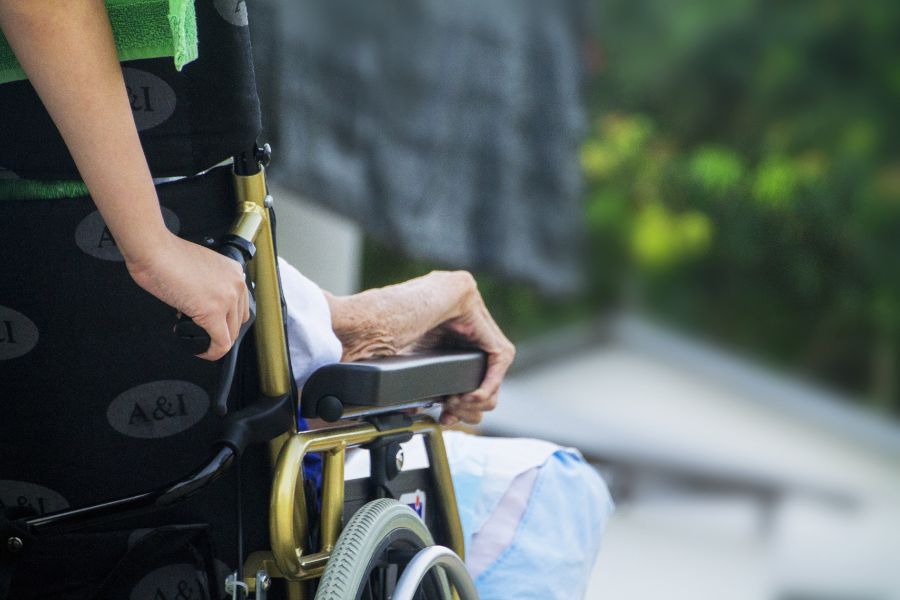
What’s the Difference Between Palliative Care and Hospice Care?
You’ve likely heard of hospice and palliative care, but do you know the difference?
There are some similarities between the two; both can be a great source of comfort for those with serious health issues. However, even though this is true, palliative care isn’t the same as hospice. Knowing what separates these two can help you explore options for yourself and your loved ones.
This quick read includes info about palliative versus hospice care, the specifics of each, and how to determine the better option based on needs.
Hospice and Palliative: What’s the Difference?
Palliative care is defined by the National Institute of Aging (NIH)1 as:
“Specialized medical care for people living with a serious illness, such as cancer or heart failure.”
Other illnesses that typically need palliative care include:
- Cardiac disease
- COPD
- Dementia
- Parkinson’s disease
- Kidney or lung disease
- Stroke
The word palliative is derived from the Latin word palliat, meaning cloaked. Thinking about this root word helps us understand the primary goal of palliative care: to cover one’s symptoms in such a way that they experience relief.
Palliative care is also known as comfort care or supportive care. Support management is another phrase commonly used. It can be given during active treatment and at any stage of the illness.
Examples of Palliative Care
Examples of palliative care include things like:
- Medication and pain management
- Nutritional changes and assistance
- Relaxation and spiritual techniques
- Emotional support for the patient
- Support for family and caregivers
It’s important to note that someone doesn’t have to be dying to receive palliative care. This is a common misconception. However, it is also where hospice care comes in.
Hospice care is a form of palliative care. It is used in the end stages of life-limiting illnesses. When nothing else can be done to heal the patient and death is imminent, hospice professionals come in to help ease the pain and suffering of the patient.
Examples of Hospice Care
Here’s one thing to remember when trying to distinguish between the two: all hospice care is considered palliative care, but not all palliative care is called hospice.
The American Cancer Society2 explains that a hospice care team coordinates the majority of care for a patient and communicates with the patient’s medical care team. The four levels include:
- Routine home care
- Continuous home care
- General inpatient care
- Respite care
The team is usually an extensive one and includes the following players.
- Doctors (i.e., primary care, hospice)
- Pharmacists and those that provide medication management
- Nurses and home health aides
- Social workers and caseworkers
- Spiritual and bereavement counselors
- Other specialists (i.e., speech, physical and occupational therapists
- Trained volunteers
The goal here is simple: providing relief and comfort regardless of who is involved.
Hospice or Palliative: Which is the Right Option?
Deciding whether to seek out hospice care or palliative care comes down to one thing: timing.
If active care is ongoing, palliative care is the answer. However, hospice care is better if you or a loved one are in the final stages of illness or disease and need support and comfort during the transition.
The benefits of either choice include the following:
- Simplifying the hospital discharge process and preventing rehospitalization
- Managing pain symptoms related to illness or disease
- Gaining access to support, education, caregivers, and community resources
- Assistance with advance directive decisions
Find the Right Care with Santé
If you’re still on the fence about which road to take, contact Santé. The Santé family can provide you with access to a full Spectrum of Care services. The personalized care experience you will receive is unmatched. Santé has the solution, whether you need short-term nursing and rehabilitation or outpatient therapy or in the comfort of your home for home health, palliative care, or hospice. Call 623-209-8844 today.
Sources:
[1] https://www.nia.nih.gov/health/what-are-palliative-care-and-hospice-care
[2] https://www.cancer.org/treatment/end-of-life-care/hospice-care/what-is-hospice-care.html

Dan is Vice President, Marketing of the Alumus family of companies. A Seattle native, he earned his BA in Humanities and Political Science at Evergreen State College. He started his career as a newspaper columnist, eventually transitioning into marketing and tech writing for Microsoft and several other startups. He later launched a successful creative agency focused on branding, digital marketing, and content production in Los Angeles, where he worked for several nursing and behavioral health clients, eventually becoming the National Marketing Director for one of them.
He has taught Vipassana mindfulness meditation and MBSR and spends whatever free time he has with his son snowboarding, hiking, and camping in the mountains.



